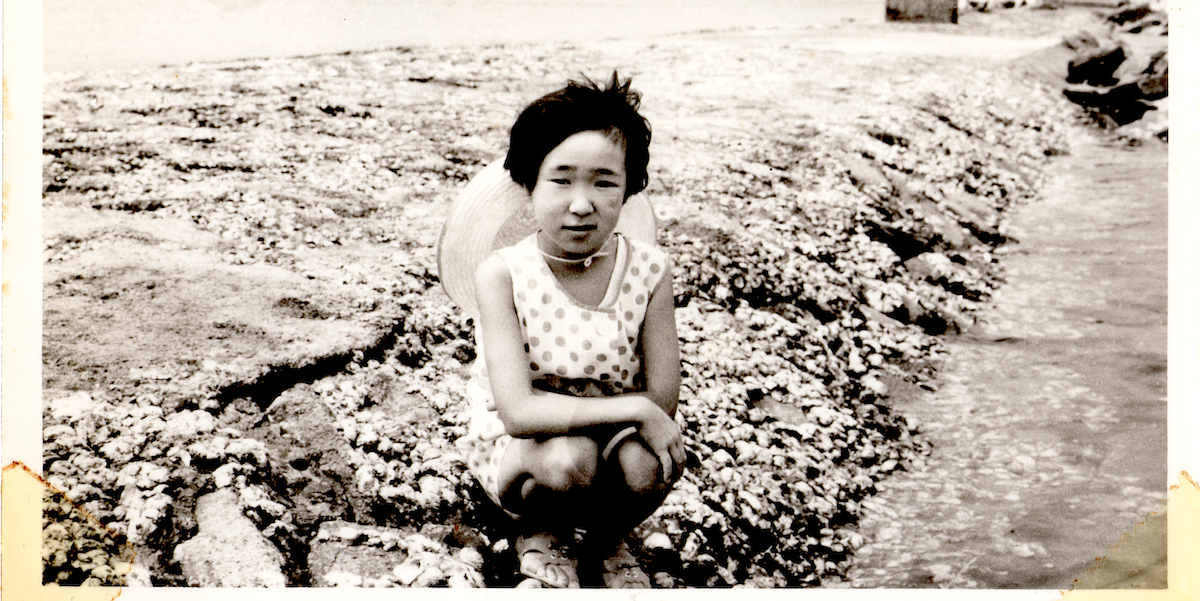There’s More to the Post-Tsunami Ghost Sightings Than ‘Unsolved Mysteries’ Shows

In the fourth episode of Netflix’s newest season of Unsolved Mysteries, Kiyoshi Kanebishi, a Japanese sociologist specializing in disaster, tells us, “I don’t really believe in ghosts. I’m not the type of person who would see them.” And honestly, same. Many so-called paranormal sightings are so obviously manufactured that it’s tough not to get a bit cynical over the whole idea. But then you see something like this show and, uh, it makes you question yourself. Repeatedly.
As Unsolved Mysteries depicts, on March 11, 2011, an earthquake caused a massive tsunami that hit the Tōhoku region of Northeastern Japan, and in its wake, it stole nearly 20,000 lives. In Ishinomaki, a town within the region, the trauma was intense and immediate. No one had been prepared for the scale of the disaster.
The tsunami reached 131 feet at its peak; it swept away not only thousands of people but their homes and memories too—photographs, books, and altars. And although the episode doesn’t mention it, the fallout only got worse from there: The earthquake triggered a nuclear meltdown at the nearby Fukushima Daiichi reactors, the most severe such meltdown since Chernobyl. All of this together created a dramatic vacuum for grief to settle in, which Unsolved Mysteries explores in detail.
What the show doesn’t delve into is some of the stranger happenings that took place after the disaster. Yes, there were many reported ghost sightings—far more than after other disasters, natural or otherwise, in Japan, such as the bombings of Hiroshima and Nagasaki. But many of the ghosts described on the show were simply adrift, not angry. That wasn’t always the case in reality.
There were several more violent possessions than those depicted in the show.
In his book, Ghosts of the Tsunami, Richard Lloyd Parry, a Tokyo-based journalist for The Times of London, reported on this phenomenon. His stories are wide and far-reaching, many of them more unsettling than the fairly commonplace ghost stories depicted in Unsolved Mysteries. Sure, there was a sighting of a lone woman standing in the middle of nowhere wearing a scarlet dress. There was an old neighbor who’d allegedly appear in her friends’ homes and leave a saltwater stain on the cushion where she sat. But perhaps most shockingly, there was a builder—Parry gives him the name Takeshi Ono—who says he was possessed.
He’d growl like a beast, roll in the mud outside his house, stare at figures walking past his home. He’d turn repeatedly on his family, snarling, “Drop dead! Everyone else is dead, so die!” For answers, he went to Reverend Kaneta, the lovely, friendly-looking monk who appears in Unsolved Mysteries.
According to Parry, the reverend splashed Ono with holy water until his head went clear. Then he revealed to Ono that the possession was possibly a punishment: Ono had traveled into the devastated area “flippantly,” eating an ice cream. “Something got hold of you, perhaps the dead who cannot accept yet that they are dead,” the reverend told Ono. “They have been trying to express their regret and their resentment through you.”
Parry writes in his book that priests from multiple belief systems, including Christian, Shinto, and Buddhist, were called upon in those months after the tsunami to “quell unhappy spirits.” It didn’t necessarily matter whether these religious leaders believed in exorcisms. They were needed.
In an interview with NPR, Parry explained, “I asked [Reverend Kaneta] about it once and he said it doesn’t matter whether ghosts really exist or not. He said what matters is that people believe in them. These experiences are real. So he never, you know, he never said to people, ‘Pull yourself together. You’re not really possessed. You’re just, I think, sad.’ You know, that’s the view I take too. It doesn’t really matter whether you believe in ghosts. What’s real is the suffering and the pain.”
A local school became the center of a heated controversy.
Unsolved Mysteries also never takes a close look at Okawa Elementary School. Of the 75 students who died while at school during the tsunami, 74 were from Okawa—an unsettling truth that led parents to rail against larger bureaucratic failures. One Japanese magazine reported that after the disaster, kids would dare one another to travel to the elementary school grounds in search of the students’ ghosts.
One mother of an Okawa student consulted with a psychic, Parry reported. They traveled together to the school grounds, and after the mother tied decorations into the surrounding bamboo trees, the psychic told her the deceased children were “delighted” with them.
But he also described horrifying scenes of the veneer between life and death, describing that the dead were “crawling on the ground” near the school. “Some of them were stuck in the water, covered in mud, and swallowing the dirty water in terrible suffering. Some of them were trapped and trying to get out,” the mother described to Parry.
But another medium, named Sumi, told the mother a different story: “You might think that the kids want their parents to find them, that they are desperate to go back home. But they are already home. They are already in a very good place. And the more you bury yourselves in the search, the more desperate you will become.”
The stories of spirits and ghosts conflicted with one another, some tragic and cruel, others quaint and kind. Unsolved Mysteries tries to explain this through the region’s rural location and complex relationship with spirituality. But as Parry puts it, “Grief and trauma express themselves often very indirectly. You can talk to people and visit communities, which on the face of it seem to be fine, but the pain can be either very raw, very awful, such as these stories.” The issue isn’t whether you believe in ghosts—I still can’t say I do—but whether you believe in the extraordinary power and physicality of grief.
You Might Also Like